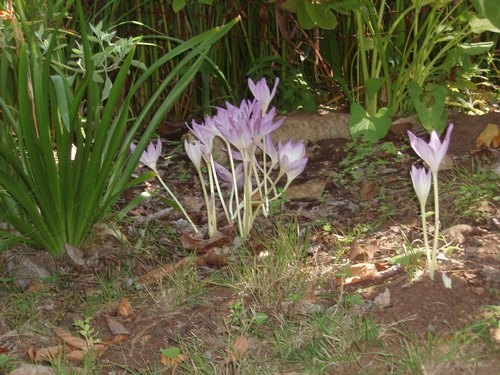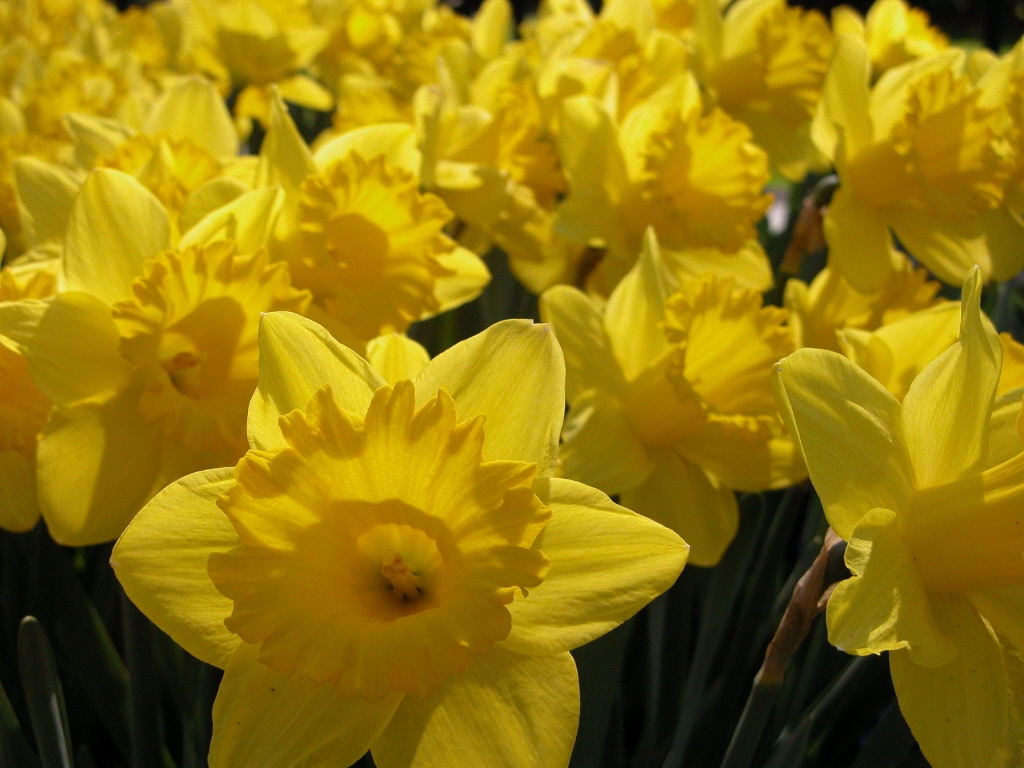Continuing in the spirit of all things fall it's prime time to plant tulips and other spring blooming bulbs, If you're like me and have squirrels scampering up every tree, checking out planting beds and planters for choice acorn planting spots, you are undoubtedly aware of how difficult it is to keep them from digging up and eating the bulbs. Yes you can plant the bulbs surrounded by chicken wire or hardware cloth but there's an easier way that's just as effective.
Dig the hole and plant the bulb as you normally would, but instead of caging it, cover the bulb with poultry grit, which is make up of crushed granite, shale or oyster shells and is available at feed stores. The squirrels don't like trying to dig through the sharp grit and quickly give up.
Next spring if they have the nerve to eat the flower buds right when they emerge from the soil you might just have to plant the types of bulbs that squirrels won't eat such as daffodils, snowdrops, chionodoxa, hyacinth or fritillaria.
It's also time to plant a cover crop in your vegetable garden to improve production next year. Fall cover crops include legumes such as fava beans, peas, vetch and clovers which germinate and grow quickly but not so fast as to harm late season or overwintering vegetable crops. Oat grass can be sown to hold the soil and protect it from erosion.
Cover crops also protect the soil from pounding winter rains which compact the soil surface and leach out nutrients. They are thick enough to choke out emerging weeds and their root systems break up and aerate hard soil. Members of the pea family gather nitrogen into their roots to further benefit the soil.
In the spring you can tun the cover crop into the soil and allow it to decompose in place or pull the plants and compost them separately. That way you can plant right away and add the compost back into the garden later when it has finished decomposing.
Seeds germinate best when the soil is in the 50 degree range so don't delay.

 I love those huge, showy tulips as well as the new colors of daffodil and narcissus coming out each year. Can’t live without them. But I want to add to the show next spring. Maybe I’ll plant Spring Starflower or Ipheion. Their starry white flowers bloom over a long period in spring and they naturalize easily. Spring Snowflake ( leucojum vernum ) will also naturalize in the garden. The flowers are small and bell shaped, white with a green or yellow spot and have a slight fragrance. And I want to include some species tulips. They will rebloom year after year just like they do in the wild in Europe, North Africa and Asia.
I love those huge, showy tulips as well as the new colors of daffodil and narcissus coming out each year. Can’t live without them. But I want to add to the show next spring. Maybe I’ll plant Spring Starflower or Ipheion. Their starry white flowers bloom over a long period in spring and they naturalize easily. Spring Snowflake ( leucojum vernum ) will also naturalize in the garden. The flowers are small and bell shaped, white with a green or yellow spot and have a slight fragrance. And I want to include some species tulips. They will rebloom year after year just like they do in the wild in Europe, North Africa and Asia. .
. to remind you that all things are possible with a bit of imagination. Recently I visited several inspiring gardens on the tour hosted by the Monterey Bay Master Gardeners here in our area and also saw some spectacular landscapes on the peninsula with APLD ( Association of Professional Landscape Designers ). So many ideas-so little time. Here is just a sampling to get you started.
to remind you that all things are possible with a bit of imagination. Recently I visited several inspiring gardens on the tour hosted by the Monterey Bay Master Gardeners here in our area and also saw some spectacular landscapes on the peninsula with APLD ( Association of Professional Landscape Designers ). So many ideas-so little time. Here is just a sampling to get you started. the shade? If you dream about drifts of colorful flowers under you trees in the spring but didn’t think they would bloom in the shade, think again . Some bulbs manage to grow just fine beneath trees-even evergreen trees. Many from the daffodil clan, including jonquils and narcissus will grow, bloom and naturalize year after year under tree canopies or other lightly shaded areas. Common ones to try are Golden Harvest, the classic, large yellow King Alfred daffodil and Dutch Master with pure gold flowers. Barret Browning has a soft. butter-yellow corolla and a pumpkin orange frilly tube.
the shade? If you dream about drifts of colorful flowers under you trees in the spring but didn’t think they would bloom in the shade, think again . Some bulbs manage to grow just fine beneath trees-even evergreen trees. Many from the daffodil clan, including jonquils and narcissus will grow, bloom and naturalize year after year under tree canopies or other lightly shaded areas. Common ones to try are Golden Harvest, the classic, large yellow King Alfred daffodil and Dutch Master with pure gold flowers. Barret Browning has a soft. butter-yellow corolla and a pumpkin orange frilly tube.